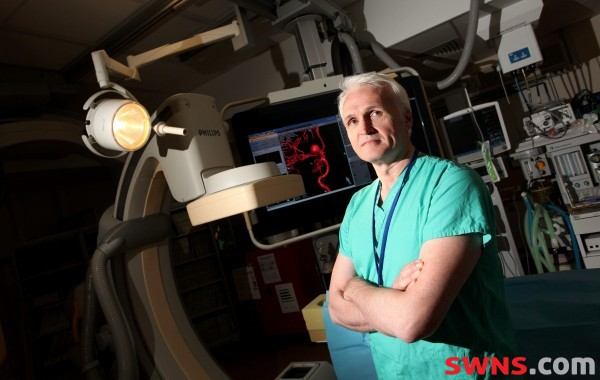 14 March 2016
(Last updated: 24 Jan 2020 17:27)
14 March 2016
(Last updated: 24 Jan 2020 17:27)
After a year during which the future for our specialty was difficult envisage, the fog is starting to clear.
There is no doubt about the strength of the evidence – I urge you to read the meta-analysis from the HERMES collaboration and Phil White’s commentary. Initial indications are that the PISTE results will complement the other evidence to date, which is reassuring for those performing the procedure within the NHS.
Updated NICE guidance ipg548 has been issued and clearly states “The procedure should only be carried out by appropriately trained specialists with regular experience in intracranial endovascular interventions, with appropriate facilities and neuroscience support”. To my mind this means Interventional Neuroradiologists or people who are trained by Interventional Neuroradiologists to perform mechanical thrombectomy and, crucially, treat aneurysms and the other range of neurological vascular pathologies we deal with in order to maintain the necessary skills. The solution for mechanical thrombectomy should, conveniently, also provide a solution for 7 day coiling of aneurysms.
The committee and other members of the UKNG, along with the BSNR, have been collaborating with other national societies and royal colleges to develop the likely structure of the service whilst recognising the considerable challenges that face us with regard to training, manpower and funding.
Many of you will have read a misguided BMJ editorial in which it was suggested teams of Cardiologists in DGH settings were best placed to take on the endovascular management of acute stroke. Whilst interested and motivated Cardiologists and other doctors are welcome to train in the INR area of practice and join teams of “traditional” INRs on mechanical thrombectomy rotas, they will first need to acquire the necessary diagnostic, interventional and clinical decision-making skills, which will require a significant period of training. A service model comprising groups of interventionists whose sole intracranial endovascular procedure is mechanical thrombectomy is to be strongly discouraged. However, some workable and safe solution will need to be found for the 10% of the English population who live over 45 minutes away from a Neuroscience centre as well as those in more geographically remote regions of Wales and Scotland (Northern Ireland have already got their act together).
With training and, should it come to pass, credentialing in mind, Rob Lenthall was set the task of drafting training guidance for mechanical thrombectomy. He is to be congratulated on producing a document which UKNG members should have already had circulated to them. His balanced and sensible guidance sits comfortably alongside other recently published international multisociety guidelines. Please pass any comments to Rob in the near future so that we can finalise this document and garner as wide multiagency support for it as possible during future national meetings. It will then make it difficult for any mavericks to operate outside the guidelines, at least in the UK. All “appropriately trained specialists with regular experience in intracranial endovascular interventions, with appropriate facilities and neuroscience support” will, of course, be very welcome to join the UKNG.
We now need NHS England to produce Specialised Commissioning for mechanical thrombectomy. As those of us who have had dealings with this august body are well aware, the cogs turn imperceptibly slowly but we are reliably informed they are turning. We shall endeavour to make sure it is recognised there needs to be significant up-front investment in infrastructure and personnel before a comprehensive service can be delivered. It’s all going to take time. I consider a reasonable target is for England to have a properly resourced country-wide 24/7 mechanical thrombectomy service by 2020.
Quite where the manpower will come from is still unclear. If reasonable rotas of 1:5 OR 1:6 are to be achieved in the majority of Neuroscience centres, there is likely to be a shortfall of 80-90 neurointerventionists. I would encourage Neuroscience centres who have not traditionally trained INRs to think about doing so – soon. This is probably the best way to populate your rotas by 2020. The RCR are expanding training numbers. We may be able to attract established neurointerventionists from abroad. Alternatively, we may be able to lure some trainees or consultants from other specialties and train/retrain them using Rob’s guidelines. Our vascular Interventional Radiology colleagues would be the most obvious group although they are suffering their own shortfall in recruitment and most of them are already on busy rotas. Each centre needs to find its own local solution and plan ahead now.
Photo courtesy of swns.com.